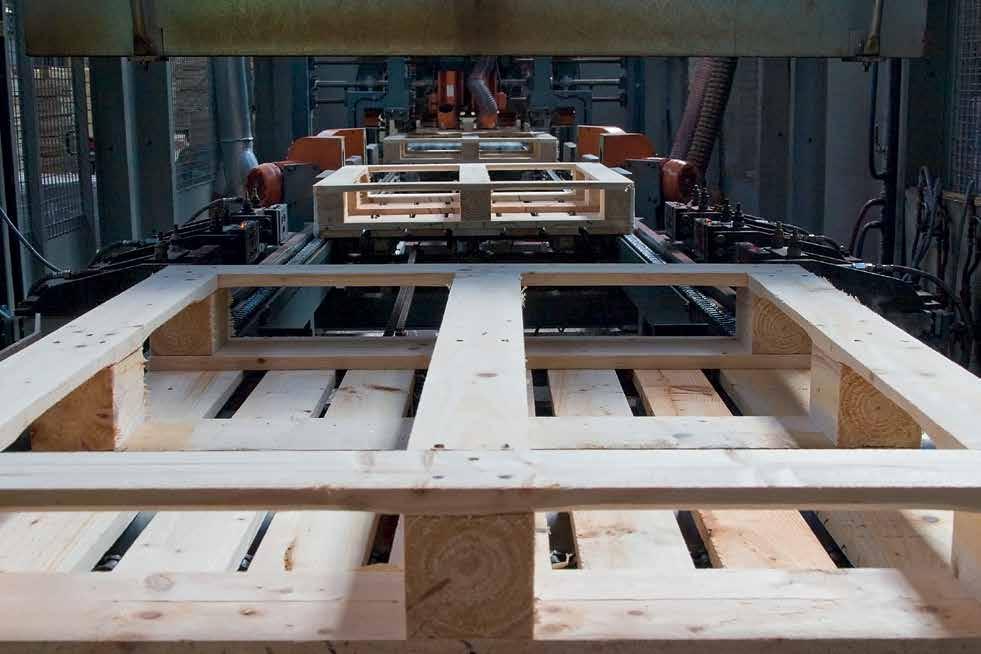TIMBER TRANSPORT
Follow the Code Roland Stiven Timber Transport Forum
O
ne of the more memorable quotes from Pirates of the Caribbean is in response to a plea from a captive to follow the pirate’s code. The response, said in a suitable pirate drawl, is that “the code is more what you’d call ‘guidelines’ than actual rules”. Wikipedia is slightly more helpful; “A code of practice can be a document that complements …. laws and regulations to provide detailed practical guidance on how to comply with legal obligations ... and should be followed unless another solution with the same or better … standard is in place”. The Road Haulage of Round Timber Code of Practice is such a document and the Timber Transport Forum is about to embark on a 5th edition. The first was produced back in 1996 and the most recent in 2012. The code covers a specific set of forestry and timber related operations involved in getting timber from the forest to the mill. In turn it draws on and tries to distil the essentials from various other laws, regulations and codes of practice covering areas such as Vehicle Construction and Use, Health and Safety, Working at Heights, Lifting Operations and Lifting Equipment, Provision and Use of Work Equipment Regula-
CONFOR.ORG.UK
tions, Safety of Loads etc, as well as some of our own industry guidance. Government departments tend to be taciturn when asked for advice on such matters and usually refer you back to the original wording of the regulation or their own generic codes. A recent request to the Department of Transport for details of any amendments to a particular regulation were met with the terse advice to visit the public library! Ultimately, we are the practitioners and only we know the detail of the operations we undertake. So, it is up to our industry to take what advice we can and agree on a set of practical standards and methods of workings that we can assure ourselves and others, comply with the law. We will only know for certain if we got it right if it were to be tested in court and, of course, the aim of the code of practice is that we never are. I was thinking of such things on the journey back from the Irish Forest Industry Transport Group conference where the boss of a quality haulage company had posed a question to Deirdre Sinnott McFeat of the Irish Health and Safety Authority. He wanted to know how to persuasively respond to the old experienced haulier who, having never lost a log from a load and never had an accident, doesn’t see why he should use more straps. There are various possible responses of course: We can be lucky - but we have all
had close shaves; we can be unlucky and we know of people and situations where people have been hurt or killed. However, there are some fundamentals about transporting timber and we can apply both calculations and industry experience in coming up with a prudent approach. We are trying to set a safe standard as a basis for training, a process we can monitor and evidence to demonstrate to ourselves, our staff and others that we are taking due care. The standard can also provide the basis of a level playing field in which all can compete in delivering quality haulage. The other related focus of presentations in Ireland was the skills shortage, noting that the average haulier is in their 50s and that more people are retiring than are passing their HGV licenses. Ireland is just about to double its harvested timber volume in 10 years and already there are lorries parked up for want of a driver. The situation is not dissimilar in Britain. The big challenge for us all is to create a workplace that young people want to join and stay in. Work that is interesting, reasonably rewarded, well equipped, safe, not stressful and, for those that want it, has scope for advancement. A draft of the 5th edition of the Code of Practice should be out for your discerning review in time for Christmas - if you are not being distracted by the Black Pearl. www.timbertransportforum.org.uk
FORESTRY & TIMBER NEWS • December 2019 71























